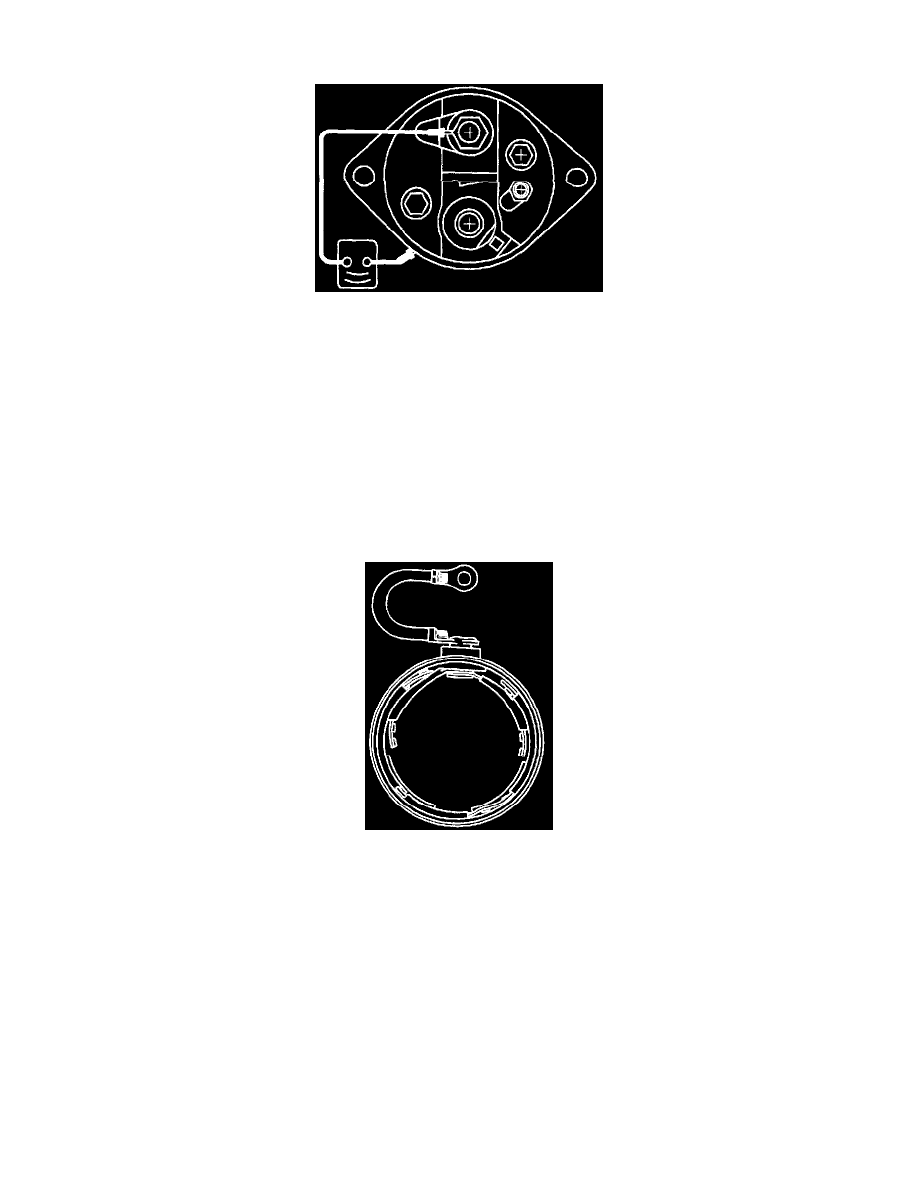G 2500 3/4 Ton Van V8-6.5L DSL Turbo VIN F (1997)

1. Using an ohmmeter, check the windings of the solenoid assembly for continuity as follows:
Solenoid Terminals
^
Check the resistance of the solenoid pull-in and hold-in windings in series by measuring the resistance between the motor terminal and the
solenoid case. Resistance should be about 1.95 ohms.
^
An extremely high resistance reading indicates a break or fault in the winding continuity. A very low resistance reading indicates a short or
ground in the winding circuit. Either condition is cause for replacement of the solenoid assembly.
2. Check the armature assembly as follows for shorts, opens, or grounds:
^
Rotate the armature in a growler, holding a steel strip such as a hacksaw blade, against the armature. If a short circuit is present, the steel strip
will vibrate in that area.
^
Check the armature for grounds using a self-powered test lamp or ohmmeter. There should not be any continuity between the armature shaft
and any point on the commutator.
^
Check for opens by visually inspecting the points where the armature conductors join the commutator. A poor connection often will be
indicated by signs of arcing or burning of the commutator.
^
Replace armatures that are shorted, grounded, or show evidence of opens.
Frame And Field Assembly
3. Check the frame and field assembly for grounds or opens.
A. Visually inspect the field coil connections for opens between the field terminal and the connection points for insulated brushes on the field coil
straps.
B. Using a self-powered test lamp or ohmmeter, check that there is no continuity (no grounds) between the frame and the field terminal.
C. Replace the frame and field assemblies that have grounds or opens.
General Information
If the motor does not perform to specifications, it may need to be disassembled for further testing of the components. Normally, the starter motor should
be disassembled only so far as is necessary to make repair or replacement of parts. As a precaution, it is suggested that safety glasses be worn when
disassembling or assembling the starter motor.
Before disassembly, perform the electrical tests on the solenoid described under "Inspection and Repair". See:
Solenoid
